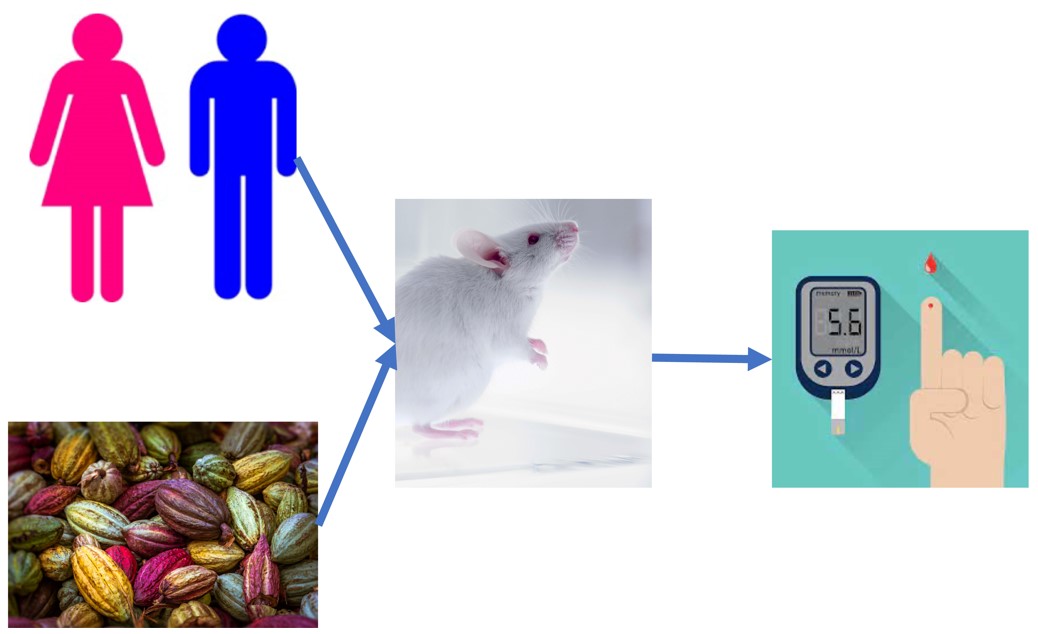Type 2 diabetes (T2D) is characterized by hyperglycemia and insulin resistance. Cocoa may slow T2D development and progression. This study employed male and female BTBR.Cg-Lepob/ob/WiscJ and wild type (WT) controls to assess the potential for cocoa to ameliorate progressive T2D and compare responses between sexes. Mice received diet without (WT, ob/ob) or with cocoa extract (ob/ob + c) for 10 weeks. Glucose and insulin tolerance tests (GTT/ITT) were conducted at weeks 1, 5 and 2, 6, respectively. Cocoa provided mild non-significant protection against weight gain vs. ob/ob control in males but not females. Male ob/ob + c had increasing fasting glucose at weeks 1 and 5 GTTs, with significantly higher levels of fasting glucose than ob/ob control at week 5. This was not seen in females. Cocoa protected against elevated 4-hour fasting glucose in week 2, but not week 6, ITTs. Cocoa partly suppressed hyperinsulinemia in males but significantly amplified it in females and protected against loss of beta cell area in females only. The mechanisms of these sex-specific effects remain to be elucidated. This study informs additional experiments with larger sample sizes and demonstrates that sex differences must be considered when designing dietary interventions for T2D.

